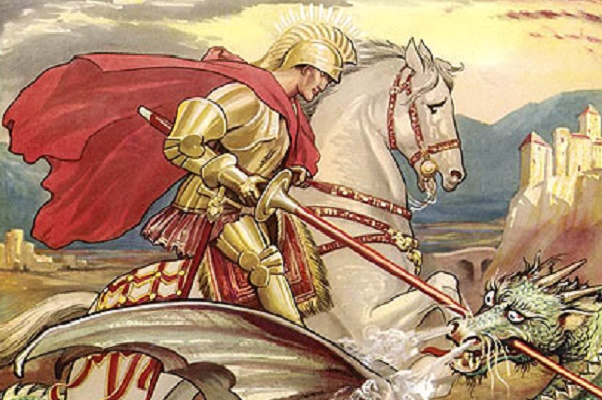
Today, at home and abroad, Englishmen and Englishwomen will come together to celebrate St George’s Day. Parades, balls and concerts will be attended by those keen to mark the day of England’s patron saint. In England, from the late-nineteenth century, the Royal Society of St George (RSStG) took the lead in St George’s Day celebrations, the association having been established to ‘revive the recognition and celebration in every part of the world, of the Old English Festival of St George’. In many sites across the globe, the association’s aim was achieved. Whether organised by branches of the RSStG or affiliated English Societies, St George’s Day celebrations began to gain popularity among English communities across Asia as an organised expression of Englishness.
The early-twentieth century signalled the onset of St George’s Day celebrations in Southeast Asia. In 1913, a St George’s Society (StGS) was established by Englishmen residing in the Malaysian state of Malacca with the object of ‘celebrating St George’s Day and of encouraging in every possible way the spirit of loyalty to the Empire and respect for the Flag’ (Singapore Free Press, 16 February 1914). The following year, the association now boasting a ‘membership of over ninety’, the Malacca StGS marked the day of their Patron Saint with a ‘fancy dress ball in the Malacca Club, when hosts and guests to the number of one hundred and seventy danced the merry round until the early hours’ (Singapore Free Press, 27 April 1914). Though not a familiar feature of St George’s Day celebrations in England, fancy dress balls, with prizes for those dressed most extravagantly, were a popular choice for celebrations overseas. Newspaper reports published in the days after the event reveal the range of costumes sported by attendees. Appearing dressed as a lettuce, a Mrs Campbell sported an unusual choice; Mrs Duff’s costume was based on the theme of ‘superstitions’; and Mr Ebden arrived dressed as a baby. Aside from these curious selections, ethnic identities were also a popular choice. Mrs Koek, Mrs J.M. Sime and Mr F.E. Beatley attended dressed as a Welsh girl, Scotch lassie, and an Irishman respectively (Singapore Free Press, 27 April 1914).
The 1914 St George’s Day Ball in Malacca took place in the months prior to the outbreak of war that summer. Naturally, the hostilities saw the suspension of national celebrations throughout the English diaspora. The focus of many associations during the war years turned squarely to benevolent activities. However, in the aftermath of war, national celebrations resumed and, in 1919, St George’s Day was celebrated in Shanghai with a grand ball, the first since the outbreak of war. The location of the celebration, the city’s Town Hall, was, according to reports published in the RSStG’s journal, The English Race, ‘beautifully decorated with evergreens, flags of the Allies and shields of the English counties’.
In the post-war years, the English in Shanghai continued to celebrate St George’s Day in elaborate fashion. Writing around St George’s Day 1921, and having observed the extravagance of the Shanghai StGS celebrations, a reporter for the North China Daily News concluded that "perhaps it is only when we get outside our native land that we really feel the thrill of patriotism". That year the association commemorated St George’s Day with a ball at the Astor House Hotel, described in China: A Sourcebook of Information as "the most commodious ballroom in Shanghai, renowned for its lobby, special dinner-parties, and balls. Banquets a special feature, and a French chef employed".
"On the occasion of St George’s Day, Shanghai Branch respectfully tenders loyal greetings to our Princely President and good wishes to the Parent Society."
Of course, these celebrations were not limited to those in Shanghai, nor are they merely events of the past. In Hong Kong, Kuala Lumpur and Selangor and Singapore, St George’s Society’s remain, each of them celebrating St George’s Day in their own unique way.
This article was first published at the blog of European, Ethnic and Expatriate, an ESRC-funded project exploring British and German expat life and social networking in Asia.